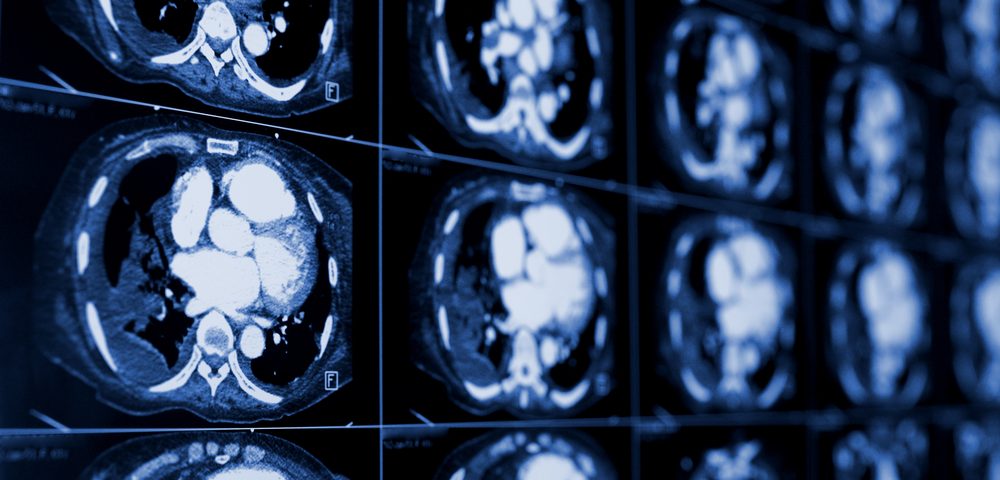Quantitative 18F-FDG positron emission tomography/computed tomography (PET/CT) parameters based on pre-treatment tumor volume could be used to predict the course of malignant pleural mesothelioma and help identify patients who need further chemotherapy, according to a study.
The research, “Prognostic value of pretreatment volume-based quantitative 18F-FDG PET/CT parameters in patients with malignant pleural mesothelioma,” was published in the European Journal of Radiology.
Researchers led by Dr. Shozo Hirota of the Department of Radiology at Hyogo College of Medicine in Japan analyzed data from 201 patients with malignant pleural mesothelioma, of whom 38 had surgery to remove the tumor.
The researchers calculated several pre-treatment 18F-FDG PET/CT scan parameters, such as maximum standardized uptake value (SUVmax), metabolic tumor volume (MTV), and total lesion glycolysis (TLG).
They discovered a number of factors associated with significantly shorter patient survival. These included older age, a high score in the European Organization for Research and Treatment of Cancer (EORTC) questionnaire, non-epithelioid histological subtype, bigger tumor size, the spread of tumors to other tissues and lymph nodes, advanced stage, non-surgical treatment, and high MTV or TLG values. A non-epithelioid histological subtype is a rarer form of mesothelioma.
Further analysis confirmed that non-epithelioid subtype, non-surgical treatment, and high TLG values were predictors of a shorter survival rate.
The team concluded that 8F-FDG PET/CT parameters, especially TLG, could predict the course of malignant pleural mesothelioma.
Malignant pleural mesothelioma is a rare and aggressive type of cancer that develops in the pleura, a thin layer of tissue surrounding the lungs. Tumors of this type usually do not respond to chemotherapy or radiotherapy. To treat the cancer, doctors use an approach called multimodality therapy that combines surgery, chemotherapy and radiotherapy.
There are big differences in the way patients respond to this approach, however, so it is important to define the expected course of the disease to stratify patients in clinical trials.
Several factors predicting the course of the disease have already been identified. They include sex, Eastern Cooperative Oncology Group (ECOG) performance status, white blood cell count, and sarcomatoid histological subtype. A sarcoma is a connective-tissue tumor.
This is the first study conducted in a large group of patients showing that volume-based quantitative 18F FDG PET/CT parameters can be used to predict survival in malignant pleural mesothelioma.


